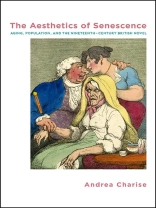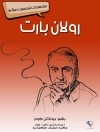Shortlisted for the 2020 BSLS Book Prize presented by the British Society for Literature and Science
The Aesthetics of Senescence investigates how chronological age has come to possess far-reaching ideological, ethical, and aesthetic implications, both in the past and present. Andrea Charise argues that authors of the nineteenth century used the imaginative resources of literature to engage with an unprecedented climate of crisis associated with growing old. Marshalling a great variety of canonical authors including William Godwin, Mary Shelley, George Eliot, Anthony Trollope, and George Gissing, as well as less familiar writings by George Henry Lewes, Christoph Wilhelm Hufeland, Agnes Strickland, and Max Nordau, Charise demonstrates why the imaginative capacity of writing became an interdisciplinary crucible for testing what it meant to grow old at a time of profound cultural upheaval. Charise’s grounding in medicine, political history, literature, and genre offers a fresh, original, thoroughly interdisciplinary analysis of nineteenth-century aging and age theory, as well as new insights into the rise of the novel—a genre usually thought of as affiliated almost entirely with the young or middle-aged.
Spis treści
List of Illustrations
Preface
Acknowledgments
Introduction: The Aesthetics of Senescence
Abbreviations
1. William Godwin and the Artifice of Immortality
2. “In the condition of an aged person”: Mary Shelley and Frail Romanticism
3. George Eliot’s Aging Bodies
4. “The Century’s corpse”: Reading Senility at the
Fin de Sičcle
5. Writing Twenty-First-Century Aging Populations
Notes
Works Cited
Index
O autorze
At the University of Toronto Scarborough,
Andrea Charise is Assistant Professor in both the Department of English and in the Interdisciplinary Centre for Health & Society.












